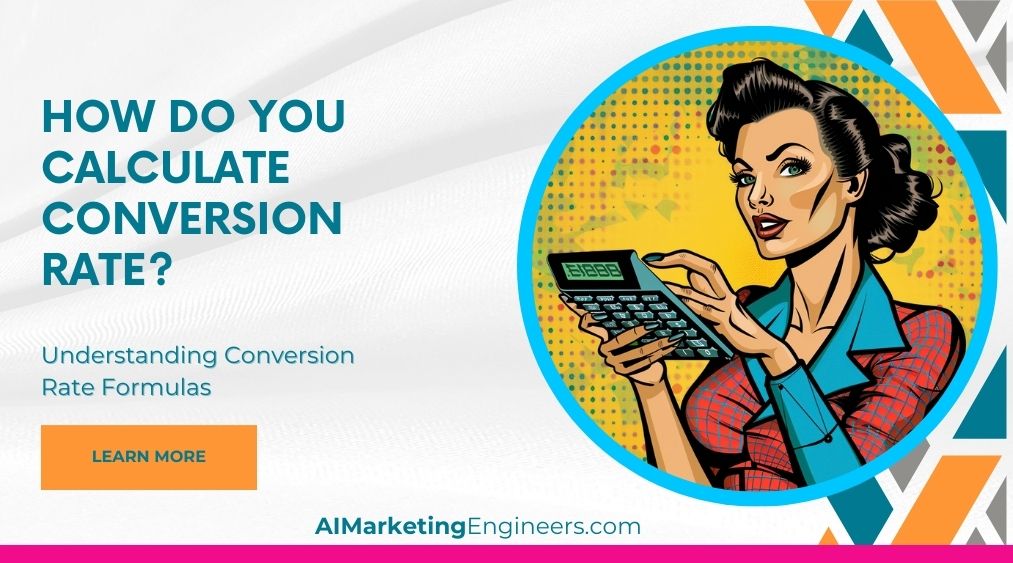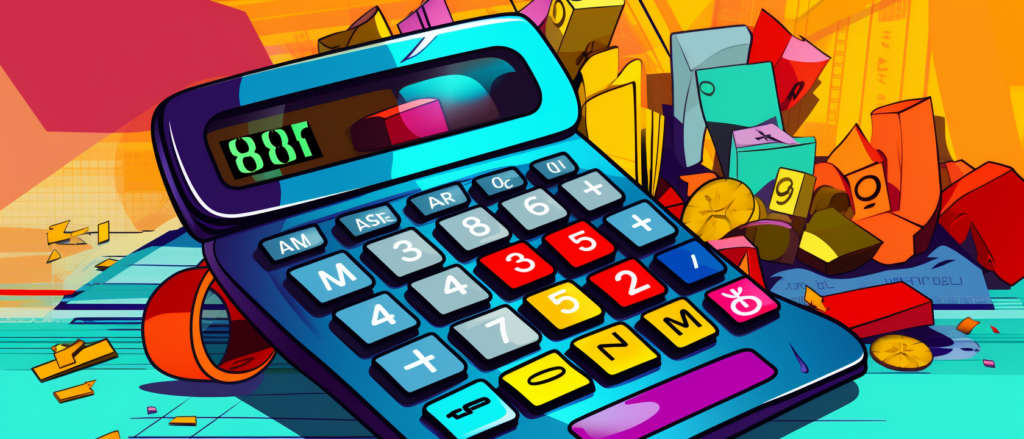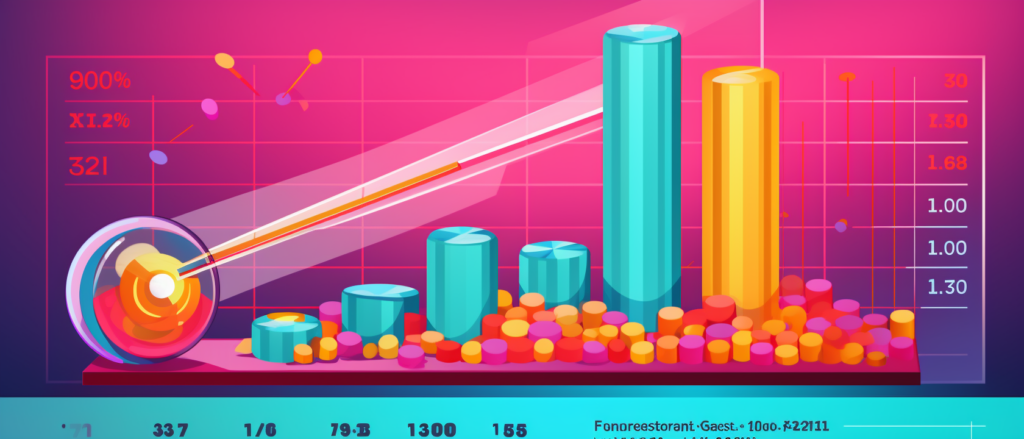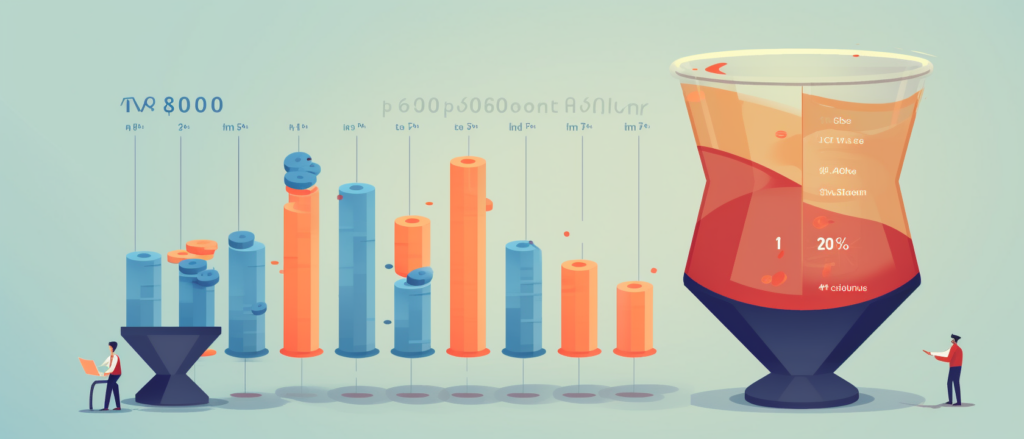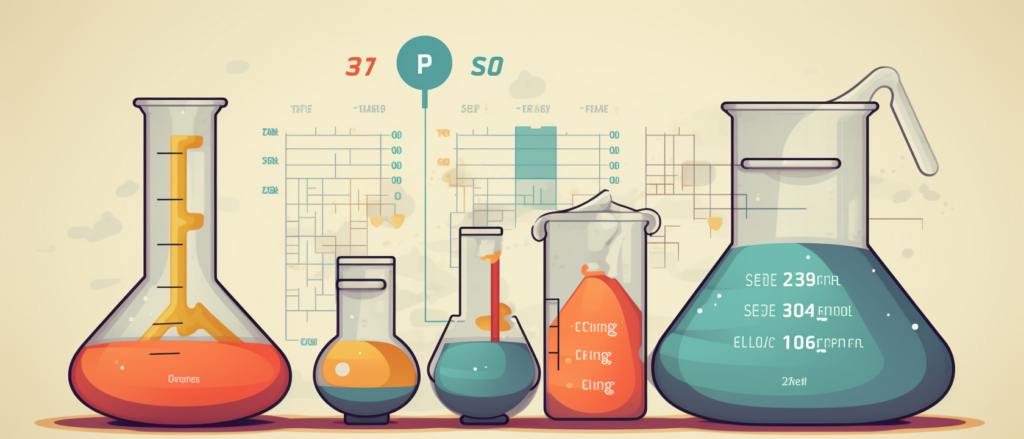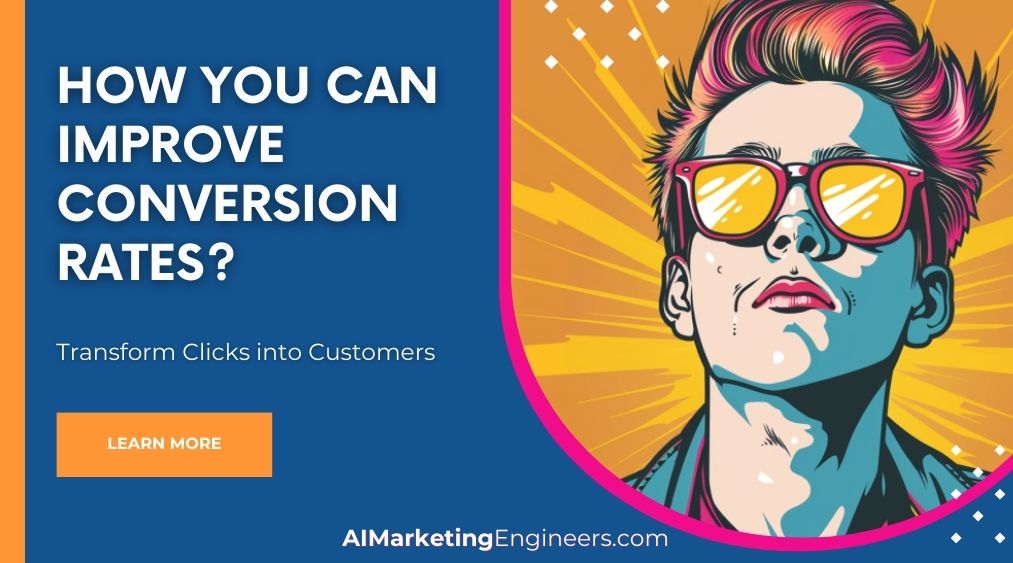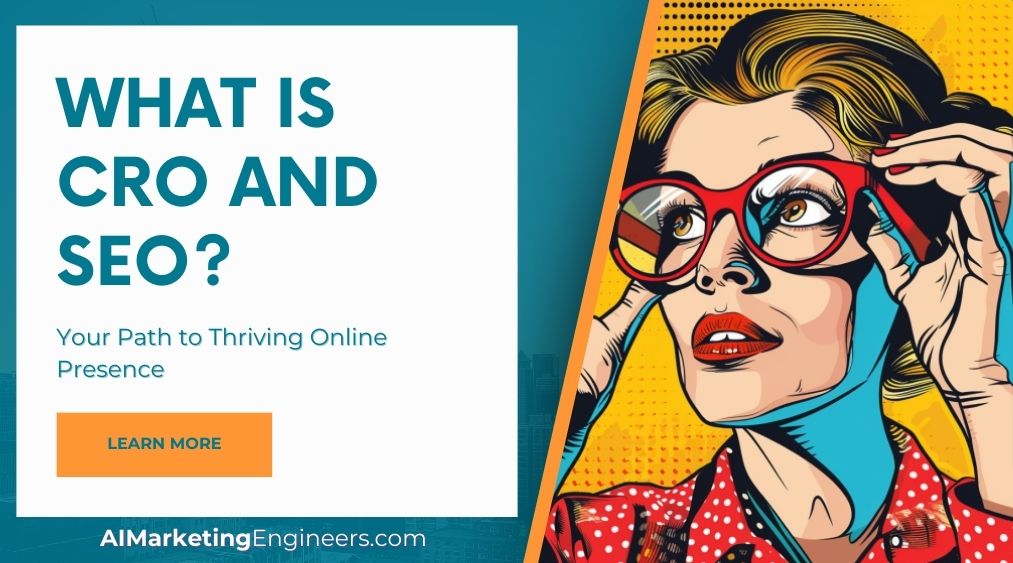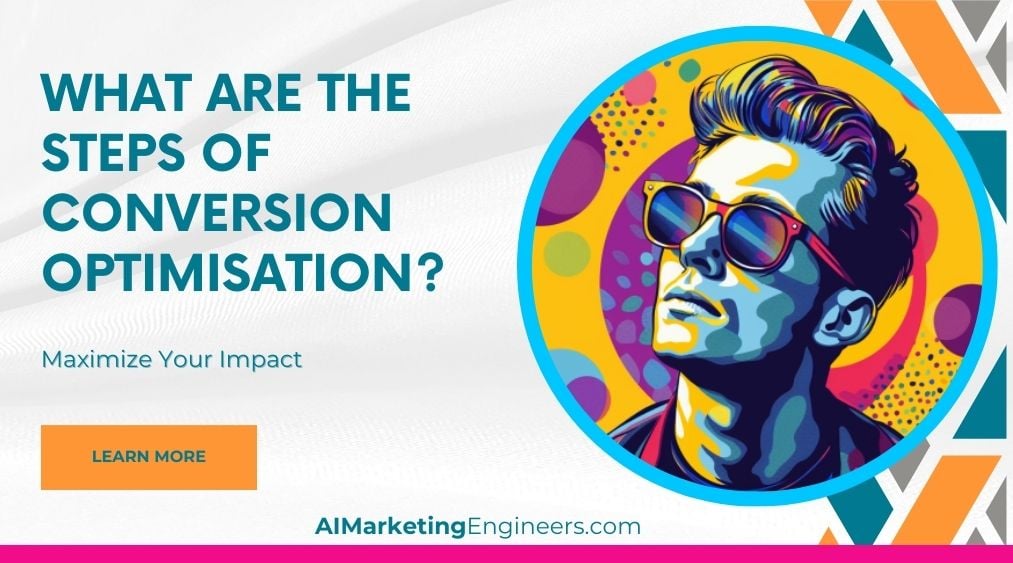Key Takeaways
✅ Define the Conversion Goal: Before you go hunting for numbers, let’s get clear on one thing – what do you want your visitors to do? Buy a product? Sign up for your delightful newsletter? Once you know, you’re half-way there.
✅ Formula for Calculating Conversion Rate: Imagine if you had a lemonade stand and wanted to know how many people walking by actually bought your lemonade. It’s somewhat like that. You just take the number of people who did what you wanted (your conversions), divide it by the total number of visitors, and then, to make it look all fancy, multiply by 100. Simple, huh?
✅ Optimize and Improve: Now comes the fun part. You’ve got your number, but what’s next? You play detective and figure out where you’re winning, where you’re not, and tweak things here and there to get better results. It’s like solving a puzzle, but this one can make you more money.
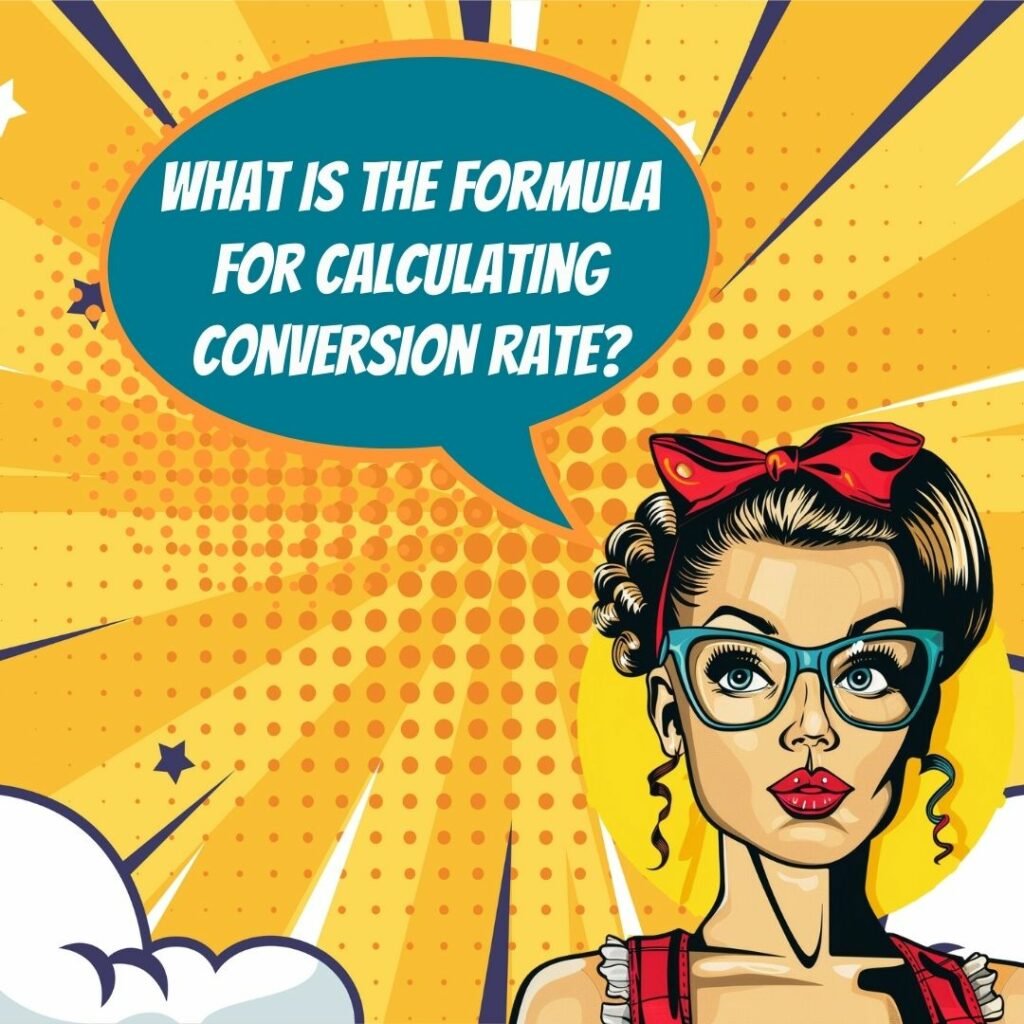
Introduction
Ever feel like your website’s a busy marketplace, but no one’s stopping to shop? Whether you’re a seasoned business owner or just starting out, understanding conversion rates is like holding the blueprint to your business success. Curious to decode the mystery and find out how to calculate your conversion rate?
Imagine knowing exactly what turns a Sunday browser into a loyal customer. It’s thrilling, right? That’s the power of nailing your conversion rate. We’ve all heard the stories of “change one button color and watch sales explode,” but how do you get there? Keep reading as we unpack not only the how-tos but also give a peek into the wizardry of turning those insights into gold. By the end of this, you’ll have a treasure chest of strategies to boost your revenue, reign in your ad spend, and hit those ROI goals like never before.
Prepare yourself for a journey filled with aha-moments and game-changing techniques that promise to reshape your digital landscape. Let’s turn those hopeful clicks into confident cash outs shall we?
Top Statistics
| Statistic | Insight |
|---|---|
| Global E-commerce Conversion Rates: The average e-commerce conversion rate worldwide stands at 2.57% in 2021. (Source: Oberlo) | A foundational benchmark for online stores to measure up against; if you’re below this, it might be time to investigate ways to up your game. |
| Industry-specific Conversion Rates: Arts and Crafts lead with 4.05%, while Food and Beverage trails at 1.67%. (Source: WordStream) | Indicates how products’ nature and customer intent can significantly impact conversion success, inviting businesses to tailor their strategies accordingly. |
| Mobile Conversion Rates: Mobile’s share of web traffic is 54.8%, but conversion rates lag at 1.85% compared to desktop’s 3.91%. (Source: Statista) | This disparity highlights a massive opportunity for optimizing mobile experiences to capture the ever-growing mobile audience. |
| Conversion Rate Growth: The conversion rate optimization market is expected to surge to $12.24 billion by 2026. (Source: MarketsandMarkets) | A statistic that screams potential; companies prioritizing optimization efforts are likely positioning for marked gains. |
Understanding Conversion Rate
Have you ever wondered how successful your website really is? It’s not just about the number of people who visit; it’s about how many of those folks actually do something, like buy your products or sign up for your newsletter. That’s where conversion rate comes in. This nifty little number lets you measure the effectiveness of your site and your marketing campaigns. It’s a way of asking, “Are we really grabbing people’s attention and turning that interest into action?”
How to Calculate Conversion Rate
Okay, so let’s get down to the nitty-gritty. Calculating conversion rate isn’t rocket science. You take the number of times someone does what you want them to do (that’s your conversions) and divide it by the total number of visitors. To turn that into a percentage, which is easier to wrap your head around, just multiply by 100. If 50 out of 1,000 visitors to your online store make a purchase, your conversion rate would be 5%. See? Simple mathematics, with potentially profound implications for your business.
Identifying Factors That Influence Conversion Rates
But why does one site make sales like hotcakes while another struggles? It’s not luck. Your conversion rate can be swayed by a whole bunch of stuff like how easy your site is to use, if your product descriptions are clear, or whether your checkout process makes people want to scream. Knowing what’s helping or hindering is key to getting more people to hit that ‘buy’ button. Have you taken a good, hard look at what might be helping or hurting your user experience?
Tactics for Conversion Rate Optimization (CRO)
Alright, so what can you do to pump those numbers up? It’s all about optimizing your site. We’re talking testing different versions of a page (does a red button work better than a blue one?), making sure your site doesn’t load like a sloth, and crafting calls-to-action that practically hypnotize folks into clicking. It’s about creating an online space that’s just so darn easy and pleasant to use that visitors can’t help but take the plunge.
The Importance of Ongoing Conversion Analysis
But wait – you can’t just set it and forget it. To keep your conversion rates looking peachy, constant vigilance is your new best friend. Use tools like Google Analytics to watch how your rates change over time. It’s like being a detective, sifting through clues to figure out what’s working and why. You’ll want to keep an eye out for patterns, spikes, and dips – they’re telling you a story, but you have to listen.
Choosing the Right Tools for the Task
Speaking of tools, have you got the right ones in your toolkit? Google Analytics is the big kahuna that can help you track your conversions, but it’s not the only game in town. Heatmap tools can show you where people are clicking on your site, or where they’re dropping off. With the right tools, you’ll have a map to treasure – a more effective, efficient website that’s a conversion-generating machine.
AI Marketing Engineers Recommendation
Recommendation 1: Use Real-Time Data to Track and Adapt Your Conversion Rate: Keep an eye on your conversion rate with the latest tools that offer real-time analytics. See those numbers as the pulse of your online business. Are the numbers jumping up during specific hours or days? Use that data to understand when your customers are most active and tailor your marketing pushes around those peak times. This isn’t just about seeing the percentage of visitors who made a purchase; it’s about understanding the when and why behind that action to make smarter moves in the future.
Recommendation 2: Segment Your Audience for More Insightful Conversion Rate Analysis: Nowadays, the one-size-fits-all approach is as outdated as a flip phone at a smartphone convention. Break down that big picture into smaller ones. What’s the conversion rate for the new visitors versus the returnees? Does it change based on age, location, or device? Today’s trend is about personalization; by segmenting your audience, you can see who’s more likely to take the leap from browsing to buying, and craft messages that speak directly to them.
Recommendation 3: Leverage A/B Testing to Optimize Your Conversion Rates: Guesswork is the old game. Testing is the new. By leveraging A/B testing tools, you can play with different website elements—headlines, images, call-to-action buttons—and see which version makes more visitors click that ‘buy’ button. It’s like comparing two recipes to see which one gets more compliments at a dinner party. This practical approach allows you to make data-backed decisions that can lead to tangible improvements in your conversion rates.
Conclusion
So, we’ve journeyed through the nitty-gritty of conversion rate calculation, and honestly, it’s pretty clear why it’s a big deal, right? Think of it like the pulse of your business’s online health – a quick snapshot that tells you if your marketing’s getting hearts pumping or if it’s time for a check-up. Remember how we walked through the simple math? It’s just conversions over visitors, and then make it a percentage. But the true value goes way beyond the math.
Have you ever stopped to think about what your visitors are looking for and if they’re actually finding it on your website? That’s where we started digging into those factors that can either boost or bust your conversion rate – from the charm of your website design to the clarity of your calls-to-action. It’s like figuring out the secret sauce that entices people to act.
And, we didn’t just stop at understanding; we talked about tuning up your website with tips that are truly doable. Optimizing your conversion rate doesn’t require a magic wand – sometimes, it’s as straightforward as speeding up your site or being crystal clear with what you want your visitors to do. Remember when we touched on those real-life success stories? They’re not fairy tales; they’re the results of regular folks who decided to give these strategies a whirl.
If there’s one thing I hope sticks with you, it’s the magic of consistently keeping an eye on this metric. Tracking and analyzing how your conversion rate ebbs and flows can transform your online space into a consistent winner. So, why not dive into tools like Google Analytics, and start playing detective with your data?
FAQs
Question 1: What’s a conversion rate?
Answer: Simply put, it’s like counting how many folks come to your party and actually dance. In tech speak, it’s how many visitors to your website or app do what you hope they will – buy something, sign up, you name it.
Question 2: How do you even figure out your conversion rate?
Answer: It’s like making a pie – easier than you think! You just take the number of people who did the thing you wanted and divide it by everyone who showed up. Then, multiply by 100 to get a percentage. So, if 10 out of 100 people bought something, that’s a 10% conversion rate.
Question 3: So, what’s considered a good conversion rate?
Answer: “Good” is pretty relative, don’t you think? It’s like asking what’s a good number of friends – depends who you ask! For online stores, hitting somewhere around 2-3% is pretty standard, but it can swing wildly depending on what you’re doing.
Question 4: How can I bump up my conversion rate?
Answer: Think of it this way: If your website were a shop, you’d want it to be welcoming, easy to get around, and maybe have a nice vibe, right? That’s the essence. Make your site or app nice to use, clear on the offers, and test different setups to see what connects best with folks.
Question 5: What’s the deal with micro vs macro conversion rates?
Answer: Picture this: micro is the small steps like someone checking out what you sell, and macro is the big leap – they buy it! So, you track both the little wins and the grand slams.
Question 6: How can I keep an eye on different channels and their conversion rates?
Answer: Use a smart tool like Google Analytics that lets you peek into where people are coming from and what they do on your site, just like keeping tabs on the different paths folks take to find your shop and what they buy.
Question 7: Conversion rate and conversion rate optimization (CRO) – aren’t they the same?
Answer: Close, but not quite. Think of the conversion rate as the score of a game, and CRO is the coaching that tries to improve that score. It’s all about tweaking and tuning your website or app to get better results.
Question 8: Can A/B testing really make a difference in conversion rates?
Answer: You bet! It’s like trying on two outfits and asking friends which one looks better before a date. You show two versions of your page to different folks and see which one gets more love, which helps you decide how to make your site the best it can be.
Question 9: Why does user experience matter for conversion rates?
Answer: Ever walked into a messy store and walked right out? That’s bad user experience online. The smoother and more enjoyable your site is to use, the more likely people are to stick around and do what you’re hoping they’ll do.
Question 10: How do you put a dollar value on a conversion?
Answer: Imagine each conversion is like selling a basket of fruit. If you sell it for $100 on average, and about 2% of visitors buy, every visit is worth $2 to you ($100 times 2%). Pretty nifty, eh?
Academic References
- Saleh, K., Shukairy, A., & Benjamin, H. (2013). Conversion Rate Optimization: The Art and Science of Converting Prospects to Customers. Sybex. Now, imagine having a map that guides you through the jungle of users’ minds. This book is like that – it tells you why people click and why they don’t. It’s all about getting into your customers’ heads and making your website as inviting as that cozy café on the corner.
- Chen, Y.-C., & Ho, Y.-H. (2015). Evaluating the Effectiveness of Web Marketing Strategies: A Conversion Rate Analysis. Journal of Electronic Commerce Research, 16(4), 295-311. Ever wondered if all those hashtags, SEO tricks, and email campaigns actually lead people back to your site? These folks explored just that. It’s like checking if the breadcrumbs you left in the forest led anybody to your gingerbread house.
- Chen, J., Tao, J., & Wang, X. (2019). Conversion Rate Optimization: A Systematic Review. In 2019 IEEE 43rd Annual Computer Software and Applications Conference (COMPSAC) (pp. 1-9). IEEE. This piece of work sifts through all the must-dos and don’t-bothers of conversion rate optimization. It’s a bit like a treasure hunt map that marks where X never, ever marks the spot.
